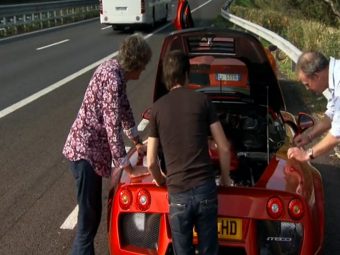According to automobile industry experts, cars lose around one-fifth of their values as soon as they are bought, which means that the spanking new car that you bought for $35,000 will have lost $7,000 by the time you reach home after a short drive from the dealer showroom. If this was not alarming enough, just imagine if you had taken a $30,000 loan to buy it, the value of your car would already be less than the loan outstanding and if you were to try and sell the car off the very same day, you would have to shell out another $2,000 to the lender to square off the loan. The concept of negative equity is also popularly known as being upside down on a car loan. The problem is quite common as an increasing number of people are buying cars by making a down payment that is less than 20%, which results in their being in an upside-down situation from day one of the car purchase.
The consequences of this can be very severe if you experience unexpected financial hardship, cannot make the due payments and are forced to sell off the car to repay the lender. According https://libertystreeteconomics.newyorkfed.org, as many as seven million Americans were delinquent for more than 90 days on their car loans at the end of 2018, so it is very evident that this is a very unhappy situation for those who also happen to be upside down on their loans.
Why People Get Upside Down on Their Car Loans
The single biggest reason for people buying cars to find themselves upside down is that when they are arranging the financing, they completely ignore the fact that new cars lose a minimum of 20% of their value immediately after they buy it. Car purchasers are also encouraged by the lenders to create rollover loans that accommodate the negative value of the earlier car in the new loans. If customers still owe money on an earlier loan, the rolling over of the balance into the new loan does seem convenient but they end up paying for both the loans at the same time. The value of the new loan is invariably far more than the value of the car, which means that they are already upside down on the loan even before they have driven off the dealer showroom.
Lenders are also keen on going out of their way to finance cars without insisting on a reasonable down payment, which encourages many buyers to stretch their budgets far more than they should and buy cars that are priced beyond their means. Car buyers add to their financial woes by not conducting adequate research into the pricing of cars and end up buying models that have sticker prices that are much more than competing models without any justification. Customers are also swayed by the salesmanship of the dealers who not only show them the most premium variants of the model they are interested in but also manage to push them into buying features and accessories that are very expensive and do not add much value to the ownership experience. In order to get the monthly repayments down to an affordable level, car buyers are inclined to extend the tenor of their loans, however, this means that they end up continuing to pay for their cars even when the vehicle is more than six or seven years old and has lost more than 50-70% of its value. It is clear to all that in such cases, the depreciation has outstripped the loan repayments and left them upside down on their loans. In case, you do find yourself upside down on a car loan with other debts making it impossible to get your finances back on track, it may be worthwhile to talk to a specialist debt relief company like NationaldebtRelief.com.
How to Avoid Being Upside Down on Your Car Loan
It is important to pay attention to all the details regarding the potential impact on costs and affordability of not only the car but also its accessories, the inescapable taxes, and the financing so that you are not upside down from the first minute that your own your car. If the model you are keen on is too expensive, you can invariably find something that is close to it in terms of looks, features, and performance but costs less from some other manufacturer or dealer who is pushing a special promotion together with the manufacturer. Often, a little bit of patience can work wonders in finding a good deal. A very effective way of retaining control over your finances is to investigate late-model used cars that have been maintained well and have low mileage.
If, however, you still want to experience the heady aroma of a new car, you should make at least a 20% down payment, choose a loan period not exceeding four years, and not have to pay more than 10% of your income towards the loan repayment and the insurance cost. Remember that the shorter the loan period, the faster is the payoff and the less is the total expense on interest. Never go by the sticker price of the car and insist on bargaining with the dealer – you will be amazed at the sort of discounts you may be able to get when the dealer has a lot of stock waiting to be sold off. Try to pay off the loan on your existing car before going in for the new car to reduce the chances of being upside down on the new loan that has the old balance rolled over.
Conclusion
It is very important to be realistic about the amount that you can afford to buy a new car. Regardless of how tempting it may be to buy a top-of-the-line model with fancy features and extras, you should only buy a model that is within your budget. Being upside down on your car loan is fraught with danger because an uncertain economic environment can leave you without a steady income or your finances may undergo stress due to unexpected events like a health issue or a divorce.








